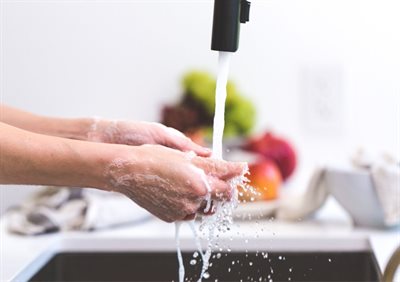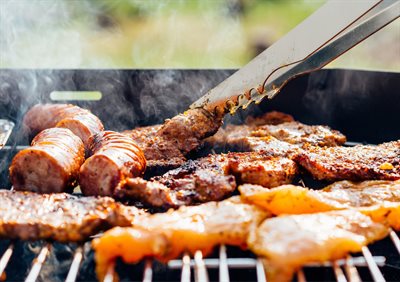Food safety advice during summer months
To keep your family safe when outside having a BBQ, picnic or PYO fruit, here’s some useful tips to help you enjoy your summer.
Hand washing when you and yours are out and about
Hand washing is key to protecting yourself and others from illness. You should wash your hands before you prepare, cook or eat food. Where possible you should wash your hands with warm soapy water. If you're in a situation where it's not possible to wash your hands, for example at a picnic, you can use hand-sanitising wipes or gels to disinfect them before handling food.
Where possible you should wash your hands with warm soapy water. If you're in a situation where it's not possible to wash your hands, for example at a picnic, you can use hand-sanitising wipes or gels to disinfect them before handling food.
Fruit and vegetables
Remember to wash fruit and vegetables with water before you eat them, including when you visit pick your own farms or pick fruit/vegetables from the garden. This is to make sure that they are clean and harmful bacteria such as E coli, Campylobacter, Salmonella and Cryptosporidium can be removed from the outside.
You should wash them under a running tap, or in a bowl of fresh water, making sure to rub their skin under the water. You can start with the least soiled items first and give each of them a final rinse. Peeling vegetables can also remove more bacteria, this is an additional precaution you can take when intending to eat root vegetables raw.
Eating Outside
In the summertime, there’s nothing nicer than eating a picnic in the fresh air. But when we take food outdoors, it can be easy to let our usual food hygiene standards slip, bringing the risk of food poisoning especially caused by bacteria such as E coli, and Campylobacter. So, it’s really important to remember the 4Cs: Chilling, cleaning, cooking, and avoiding cross-contamination
Cross contamination
Bacterial cross-contamination is most likely to happen when raw food touches or drips onto ready-to-eat food, utensils or surfaces and is a particular risk when eating outside.
You can avoid it by:
Preparing food hygienically by using different utensils, plates and chopping boards for raw and cooked food. Ensuring you wash your hands after touching raw food and before you handle ready-to-eat food.
Storing food effectively by covering raw food, including meat, and keeping it separate from ready-to-eat food and store covered raw meat, poultry, fish and shellfish on the bottom shelf of your fridge. Do not reuse a sauce or marinade, which has already been put on raw meat, with cooked or ready to eat food.
BBQ’s
So, here's what you need to do when cooking on a BBQ to protect you and your guests from food poisoning. The risk of undercooking meat and of cross-contamination can increase during a BBQ. Frozen meat tends not to cook through thoroughly on a BBQ, it’s  important to cook food at the right temperature and for the correct length of time. This kills any harmful bacteria that may be present. Plan ahead and defrost food overnight in the fridge, making sure juices don’t leak onto other food. Use a dish with a lip or rim and place in the bottom of the fridge. If this isn’t possible or it hasn’t defrosted fully in time, use a microwave on the defrost setting directly before cooking.
important to cook food at the right temperature and for the correct length of time. This kills any harmful bacteria that may be present. Plan ahead and defrost food overnight in the fridge, making sure juices don’t leak onto other food. Use a dish with a lip or rim and place in the bottom of the fridge. If this isn’t possible or it hasn’t defrosted fully in time, use a microwave on the defrost setting directly before cooking.
Once food has been defrosted, cook and eat it within 24 hours. Different types of meat will have different cooking requirements: red meat such as steaks can be served pink, rare or bloody and will be safe to eat as long as the surface has been adequately seared. Other meats, like chicken and pork, as well as minced meat products such as burgers, kebabs and sausages, should not be served pink or rare as bacteria can be in the meat. Turn your meat regularly on the grill and move it around to make sure it’s evenly cooked on all sides. Remember that charred on the outside doesn't always mean cooked on the inside.
Further information
Keeping food safe on a picnic | Food Standards Agency
Raw drinking milk | Food Standards Agency
Guidance for safe foraging | Food Standards Agency
BBQ food safety | Food Standards Agency